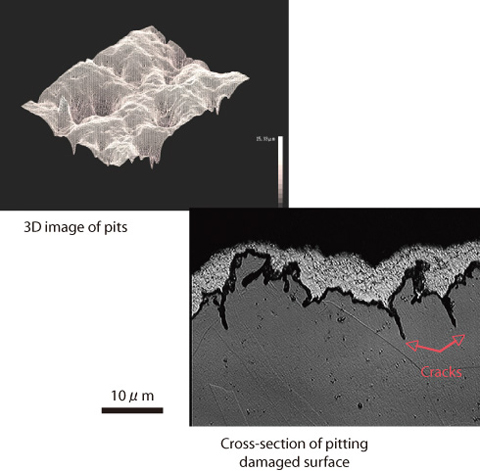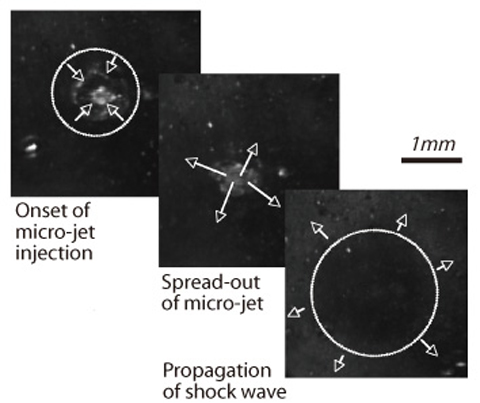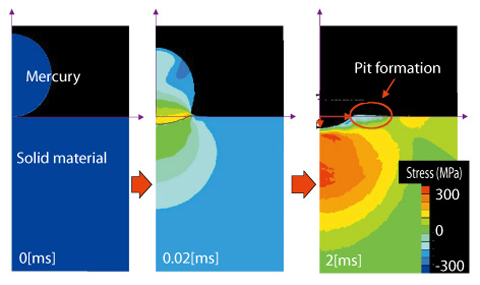
Fig.4-36 Micrographs taken by a laser microscope

(a) Cavitation bubble collapse behavior

(b) Micro-jet impact analysis
Fig.4-37 Micro-jet impact analysis with impact velocity (ca. 200 m/s) estimated from observing bubble collapse behavior describes well the pit formation.
Innovative researches will be performed at Materials & Life Science Experimental Facility in "J-PARC", in which a mercury target system will be installed in a MW-class pulse spallation neutron source. Proton beams will be injected into mercury target to induce the spallation reaction. At the moment the intense proton beam hits the target, pressure waves are generated in the mercury because of the abrupt heat deposition. The pressure waves interact with the target vessel leading to negative pressure that may cause cavitation along the vessel wall. Localized impacts by micro-jets and /or shock waves which are caused by cavitation bubble collapse impose pitting damage on the vessel wall. Fig.4-36 shows micrographs of the pitting damage caused by mechanically creating the pressure waves in mercury. Such pitting damage is a crucial issue for high power mercury targets. The cavitation bubble collapse behavior was observed by using a high-speed video camera, and also simulated numerically (Fig.4-37). Localized impact was quantitatively estimated through comparison between numerical simulation and experiment. A novel surface treatment technique that consists of carburizing and nitriding processes was developed. The treatment condition was optimized to achieve an improved surface layer with a suitable hardness gradient that can mitigate the pitting damage due to localized impacts, taking into account the stress distribution evaluated by micro-jet impact simulation. This surface improvement increases the lifetime of the mercury target vessel: the number of pulses before pitting damage becomes pronounced increases from 106 to 107.